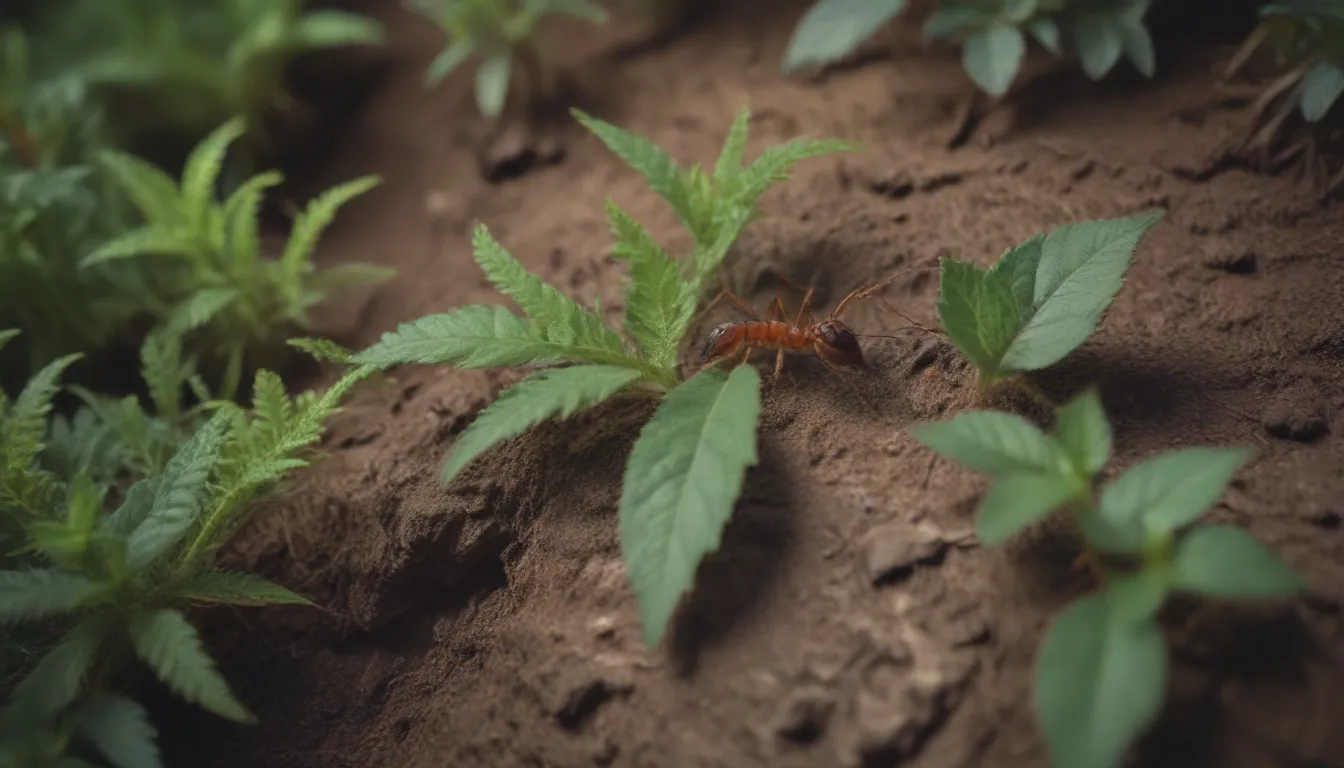The Ultimate Guide to Ant-Repelling Plants: Natural Ways to Keep Your Home Ant-Free

Are you tired of dealing with pesky ants invading your home and garden? Ants are incredibly resilient creatures, outnumbering humans by a staggering 2.5 million to one and with over 15 thousand species found almost everywhere on earth. Fortunately, there are natural ways to deter ants using plants that emit scents that ants find repulsive. By strategically planting these ant-repelling plants around your home and garden, you can create a barrier that ants will avoid at all costs.
Understanding Ants and Their Sense of Smell
Ants rely heavily on their sense of smell to locate food sources, with four to five times as many scent receptors in their antennae as other insects. This keen sense of smell is what allows ants to find their way to food and water sources. By planting aromatic plants with high amounts of essential oils and strong scents, you can create an environment that is too intense for ants’ sensitive olfactory receptors, causing them to steer clear of your space.
How Ant-Repelling Plants Work:
- Plants with high levels of essential oils emit strong scents that ants find repulsive.
- Some plants contain pyrethrins, a substance that affects ants’ nervous systems, causing paralysis.
- Certain plants attract predators that feed on ants, helping to control ant populations naturally.
14 Ant-Repelling Plants to Keep Your Home Ant-Free
- Mint
- Name: Mint
- Hardiness Zone:
- Light:
- Water:
- Mature Size:
Of the dozens of mint varieties, peppermint and spearmint are highly fragrant and repel ants with their essential oil content. These easy-to-grow plants make a great ground cover and can be strategically planted around your home to deter ants.
- Rosemary
- Name: Rosemary
- Hardiness Zone:
- Light:
- Water:
- Mature Size:
Rosemary’s strong evergreen scent and needle-like leaves are off-putting to ants, making it a great natural deterrent. This versatile herb can be grown both indoors and outdoors, providing year-round ant protection.
- Catnip
- Name: Catnip
- Hardiness Zone:
- Light:
- Water:
- Mature Size:
Catnip is not only loved by cats but also repels ants with its musty, herbal scent. This easy-to-grow perennial can be used both in the garden and harvested for indoor ant control.
- Sage
- Name: Sage
- Hardiness Zone:
- Light:
- Water:
- Mature Size:
Garden sage contains natural chemicals that are toxic to ants, making it an effective ant deterrent. This herb is not only great for cooking but also for keeping ants at bay.
- Pennyroyal
- Name: Pennyroyal
- Hardiness Zone:
- Light:
- Water:
- Mature Size:
Pennyroyal’s musky, minty aroma repels ants, mosquitoes, and flies. However, it’s important to note that the essential oil of pennyroyal is toxic to both humans and animals.
- Citronella Grass
- Name: Citronella Grass
- Hardiness Zone:
- Light:
- Water:
- Mature Size:
Citronella grass emits a lemon-scented aroma that is unpleasant to ants and other pests. By growing this grass in pots, you can create a barrier around outdoor living areas to keep ants at bay.
- Eucalyptus
- Name: Eucalyptus
- Hardiness Zone:
- Light:
- Water:
- Mature Size:
Eucalyptus trees and shrubs have a sharp, biting scent that ants cannot tolerate. By placing eucalyptus twigs around your home, you can effectively repel ants and create a natural barrier.
- Lavender
- Name: Lavender
- Hardiness Zone:
- Light:
- Water:
- Mature Size:
Lavender’s sweet, perfume-like fragrance is too strong for most insects, including ants. This beautiful perennial plant works well in gardens, flower beds, and as a companion plant in vegetable gardens.
- Bay Laurel
- Name: Bay Laurel
- Hardiness Zone:
- Light:
- Water:
- Mature Size:
Bay laurel leaves emit a bitter odor that repels ants and other insects. Dried bay leaves can be sprinkled around windowsills and countertops to deter ants attracted to food sources.
- Garlic
- Name: Garlic
- Hardiness Zone:
- Light:
- Water:
- Mature Size:
Garlic’s strong, pungent scent is off-putting to ants and many other animals and insects. By planting garlic in pots, you can create a natural barrier against ants in your home and garden.
- Thyme
- Name: Thyme
- Hardiness Zone:
- Light:
- Water:
- Mature Size:
Thyme is not only a versatile culinary herb but also a natural ant deterrent. Ladybugs are attracted to thyme flowers, helping to control aphids that ants feed on.
- Tansy
- Name: Tansy
- Hardiness Zone:
- Light:
- Water:
- Mature Size:
Tansy’s pungent camphor-like odor repels ants and other insects. This perennial plant can be invasive, so it’s important to contain its growth in your garden.
- Marigold
- Name: Marigold
- Hardiness Zone:
- Light:
- Water:
- Mature Size:
Marigolds deter ants with their pungent fragrance and host insects that feed on ants. These colorful flowers are great for borders, pots, and as companion plants in gardens.
- Chrysanthemum
- Name: Chrysanthemum
- Hardiness Zone:
- Light:
- Water:
- Mature Size:
Chrysanthemums contain natural insect-repelling substances that affect ants’ nervous systems, causing paralysis. These flowers are great for adding color to your garden while keeping ants at bay.
Additional Tips for Keeping Ants Away:
- Planting strongly scented plants like pine, camphor, sage, and catnip can help deter ants.
- Avoid planting peonies, roses, clematis, and penstamon, which attract ants.
- Mint is effective for repelling both ants and spiders, making it a versatile plant for pest control.
Ants can be a nuisance, but with the right plants and strategies, you can keep them at bay naturally. By incorporating ant-repelling plants into your garden and home, you can create a fragrant barrier that ants will avoid. Say goodbye to pesky ants and hello to a more peaceful, ant-free environment!





